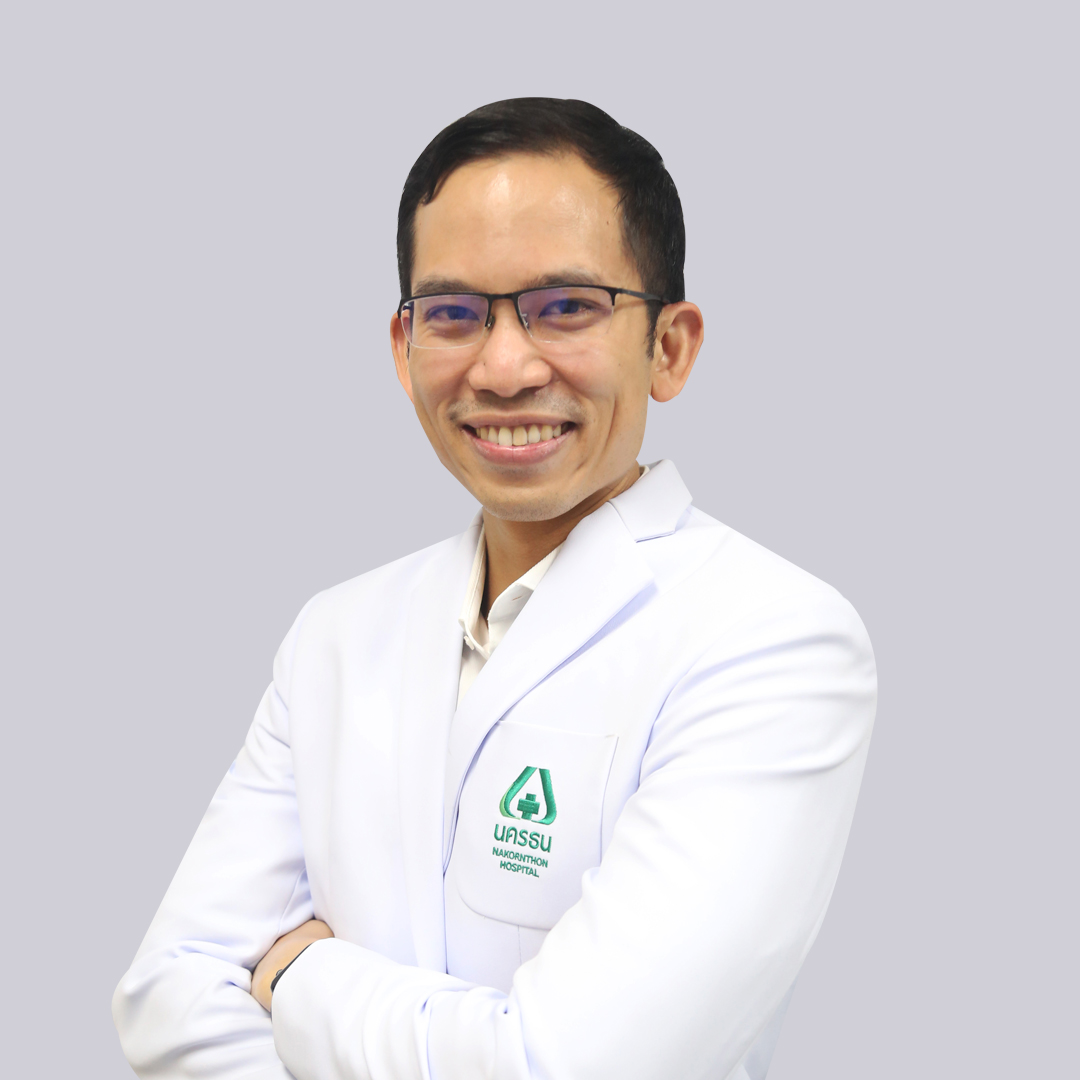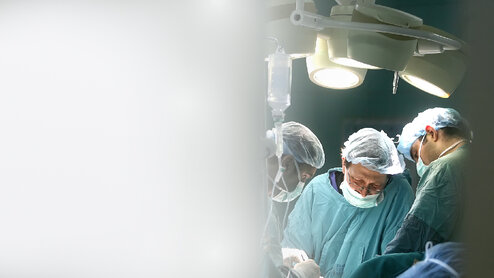Heart Center

Heart Center, Nakhonthon Hospital
Heart disease is the leading cause of death among Thai people and tends to increase in all age groups. Thailand has found as many as 70,000 deaths per year from heart disease and stroke. Most patients may not be aware that they have heart disease. Because there are often no symptoms in the early stages before you know it. Symptoms of heart disease such as chest pain and tightness in the chest, or even worse, you may experience this after you've already had a heart attack. And although heart disease is a serious disease and can cause death, can be prevented and treated with a team of medical experts and modern medical technology.
Heart Center, Nakhonthon Hospital is ready to take care of all your heart health problems. Providing services ranging from heart health screening to the examination and treatment of cardiovascular disease and detailed chest diseases, by a team of expert doctors and nurses with experience in caring specifically for heart disease patients 24 hours a day, along with modern medical equipment, including a cardiac catheterization laboratory, operating room and standard cardiac intensive care unit. Rest assured t that patients will receive treatment and care to their fullest capability.
Medical Services of the Heart Center
1. Diagnosis of Cardiovascular disease
- Electrocardiogram (Electrocardiography)
- Holter monitoring 24 hours8/ 48 hours
- Exercise stress test
- Examination of the heart using high-frequency echo waves (Echocardiogram)
- Transesophageal high-frequency echocardiography (Transesophageal Echocardiography: TEE)
- Diagnosis of coronary arteries by computerized x-ray machine (Coronary Artery Calcium scan)
- Detection of peripheral artery stenosis by blood pressure in the legs and arms (Ankle Brachial Index)
- Examination of cardiac function while exercising, echocardiogram using dobutamine stimulation (Dobutamine Stress Echocardiogram)
Testing the electrical currents produced by the heart muscle as the heart contracts. It is a method for detecting heart disease that is simple, effective, painless and takes less than 5 minutes. This test may give normal results. In the early stages of acute coronary ischemia when in doubt, you should check again.
A device that records electrocardiograms 24-48 hours, strapped to the patient while performing daily activities. The patient can return to stay at home or work normally while the machine is attached and record an electrocardiogram. When 24-48 hours have elapsed, the patient returns and takes off the machine to allow the doctor to read the results and determine whether there is an irregular heartbeat or not.
It is a test for coronary artery disease or ischemic heart disease or arrhythmia, that may occur while exercising by walking on a treadmill that moves fast and gradually increase its speed. Symptoms and changes in the ECG will be determined. If there is insufficient blood flow, the doctor can diagnose the disease.
Digital high-frequency echo sound waves pass through the chest wall to reach the heart, using a special probe, images of the heart's chambers and contractions can be seen. This helps doctors diagnose disease, prognose disease, determine severity and efficiently follow up on treatment results in cardiovascular diseases.
It examines the heart from inside the digestive system. This is because the digestive tract is behind the heart. As a result, this method of examination will give a clearer picture than a chest examination. Because the instrument is close to the heart and there are no lungs or bones covering it, it is performed in patients with suspected heart valves or checking for blood clots in the atria.
Using a computerized tomography (CT) scan to check for calcified plaque in the coronary arteries which is the main artery that supplies blood to the heart muscle
Peripheral arterial flow testing or measuring the stiffness of the peripheral arteries in the legs is convenient, safe, and does not cause pain and get the results in a short while. There is no need to abstain from food and drink before the examination, and it is also possible to search for patients at risk of ischemic stroke and coronary artery disease.
It is a test of cardiac function when the heart is working more than normal. Using a cardiac ultrasound machine in conjunction with the administration of Dobutamine as a stimulant through an intravenous saline line, used in cases where the patient cannot be examined by walking on a treadmill.
2. Guidelines for Treating the Heart Center
2.1 Heart Treatment Group Without Surgery
Heart Valve Group
- Transcatheter Aortic Valve Replacement (TAVI)
- Closing the hole between the heart's septum via a cardiac catheter (Transcatheter ASD Closure)
Abnormal Electrocardiogram Group
- Treatment of cardiac arrhythmias with transcatheter high-frequency radio waves (Radiofrequency Catheter Ablation of Cardiac Arrhythmias)
- Treating heart arrhythmias with a pacemaker (Pacemaker)
- Inserting a surgically implanted automatic cardiac defibrillator (Automatic Implantable Cardioverter Defibrillator: AICD)
- Inserting a pacemaker and helping the heart contract (Cardiac Resynchronization Therapy: CTR/CRTD)
Group of Congenital Heart Defects
- Treatment of congenital heart disease by Close the heart valve, leaking atrial/ventricular wall. (Transcatheter ASD Closure)
Cardiovascular Group
- Coronary angioplasty with a balloon and stent (Percutaneous Coronary Intervention: PCI)
- Dilating narrowed leg arteries with a balloon and stent (Percutaneous Transluminal Angioplasty: PTA)
2.2 Treatment with Cardiovascular Surgery
- Replace a heart valve (Heart Valve Replacement or Repair)
- Coronary artery bypass surgery (CABG)
It is a standard surgery method, which involves opening an incision in the middle of the chest. Treat heart valve abnormalities in the case of heart valve loss or has greatly deteriorated.
It is surgical procedure to bypass narrow or blocked blood
3. Innovation in Diagnosis and Treatment of Cardiovascular Disease
A biplane X-ray machine for diagnosing and treating blood vessel disease, or Biplane DSA, has similar working principles to a computerized x-ray machine but is able to take images of blood vessels in two planes simultaneously, namely the front and the sides. The resulting images are sharp and clear, this allows the doctor to clearly see the very small catheters. It's like seeing a 3D image, making it possible to treat complicated cardiovascular disease.
It also increases the efficiency of treating patients with symptoms of coronary artery disease. The doctor can insert a catheter to use the balloon to widen the blood vessels, some patients may be at risk for their blood vessels to narrow further. Doctors can also insert the stent into the artery with precision.
Online Consultation
Business hours
Open daily Monday-Sunday 07.00-20.00 hrs.
Location
Heart Center Nakornthon Hospital Fl.1
Contact
Tel. 0-2450-9999 ext. 1074-1075
Medical team of Heart Center
Dr.Thipalcorn Phangmuangdee
ศูนย์การแพทย์ : Heart Center
ความชำนาญพิเศษ : Internal Medicine/Cardiology/Interventional Cardiology
Dr.Somkanueng Tanworrakul
ศูนย์การแพทย์ : Heart Center
ความชำนาญพิเศษ : Internal Medicine/Cardiology
Dr.Porntep Amornritvanich
ศูนย์การแพทย์ : Heart Center
ความชำนาญพิเศษ : Internal Medicine/Cardiology
Dr.Wasant Soonfuang
ศูนย์การแพทย์ : Heart Center
ความชำนาญพิเศษ : Internal Medicine/Cardiology/Interventional Cadiology
Dr.Sukhum Tachasakunjaroen
ศูนย์การแพทย์ : Heart Center
ความชำนาญพิเศษ : Internal Medicine/Cardiology/Interventional Cadiology
Dr.Krailerk Chettakulanurak
ศูนย์การแพทย์ : Heart Center
ความชำนาญพิเศษ : Internal Medicine/Cardiology
Dr.Niphat Viboolkitvarakul
ศูนย์การแพทย์ : Heart Center
ความชำนาญพิเศษ : Internal Medicine/Cardiology
Dr.Suwit Khlangpremchit
ศูนย์การแพทย์ : Heart Center
ความชำนาญพิเศษ : Internal Medicine/Cardiology/Cardiac Electrophysiology
Dr.Patcharee Pawasuttikul
ศูนย์การแพทย์ : Heart Center
ความชำนาญพิเศษ : Internal Medicine/Cardiology
Dr.Anuruck Jeamanukoolkitit
ศูนย์การแพทย์ : Heart Center
ความชำนาญพิเศษ : Internal Medicine/Cardiology/Interventional Cadiology
Article
















.jpg)

